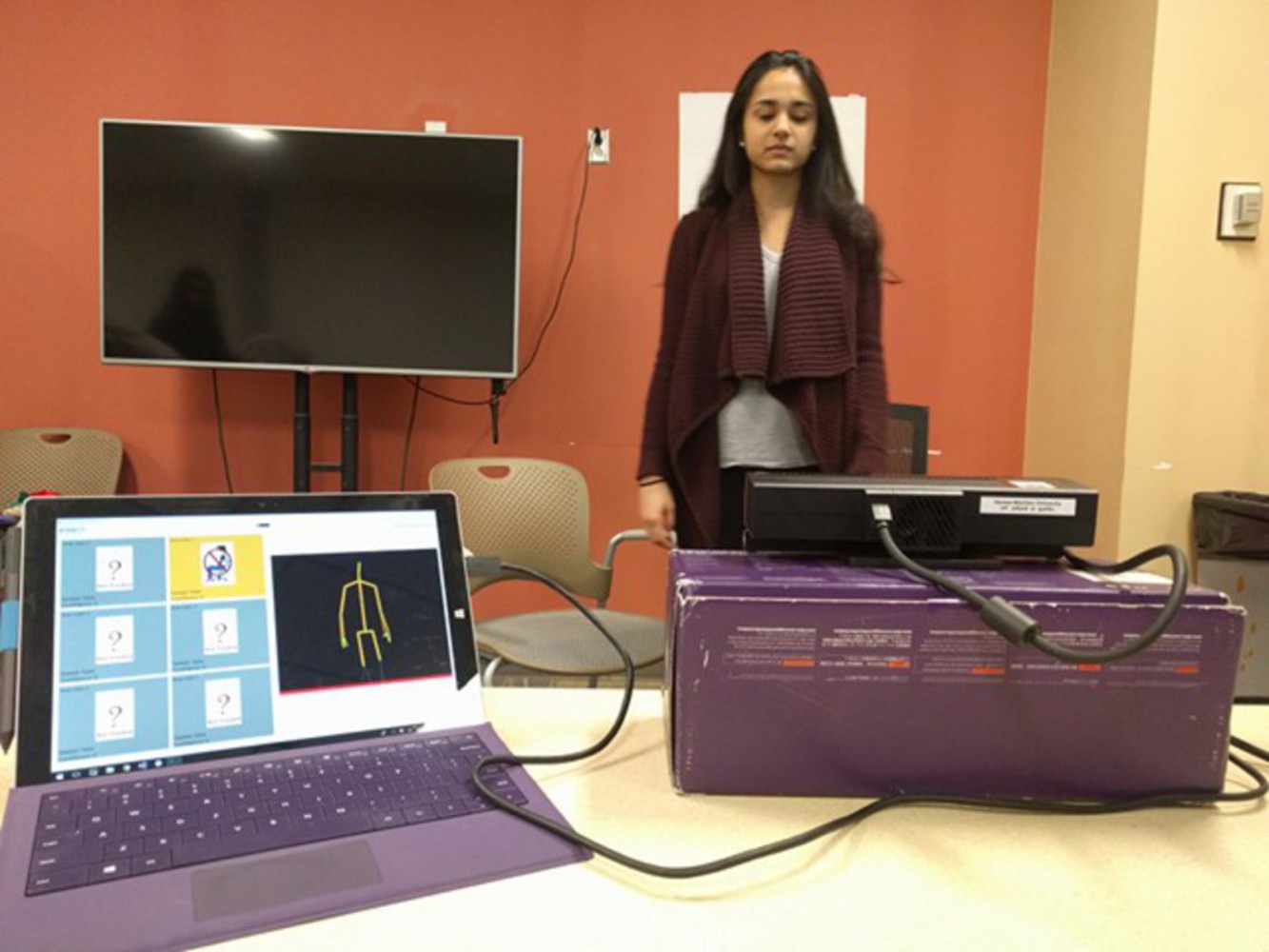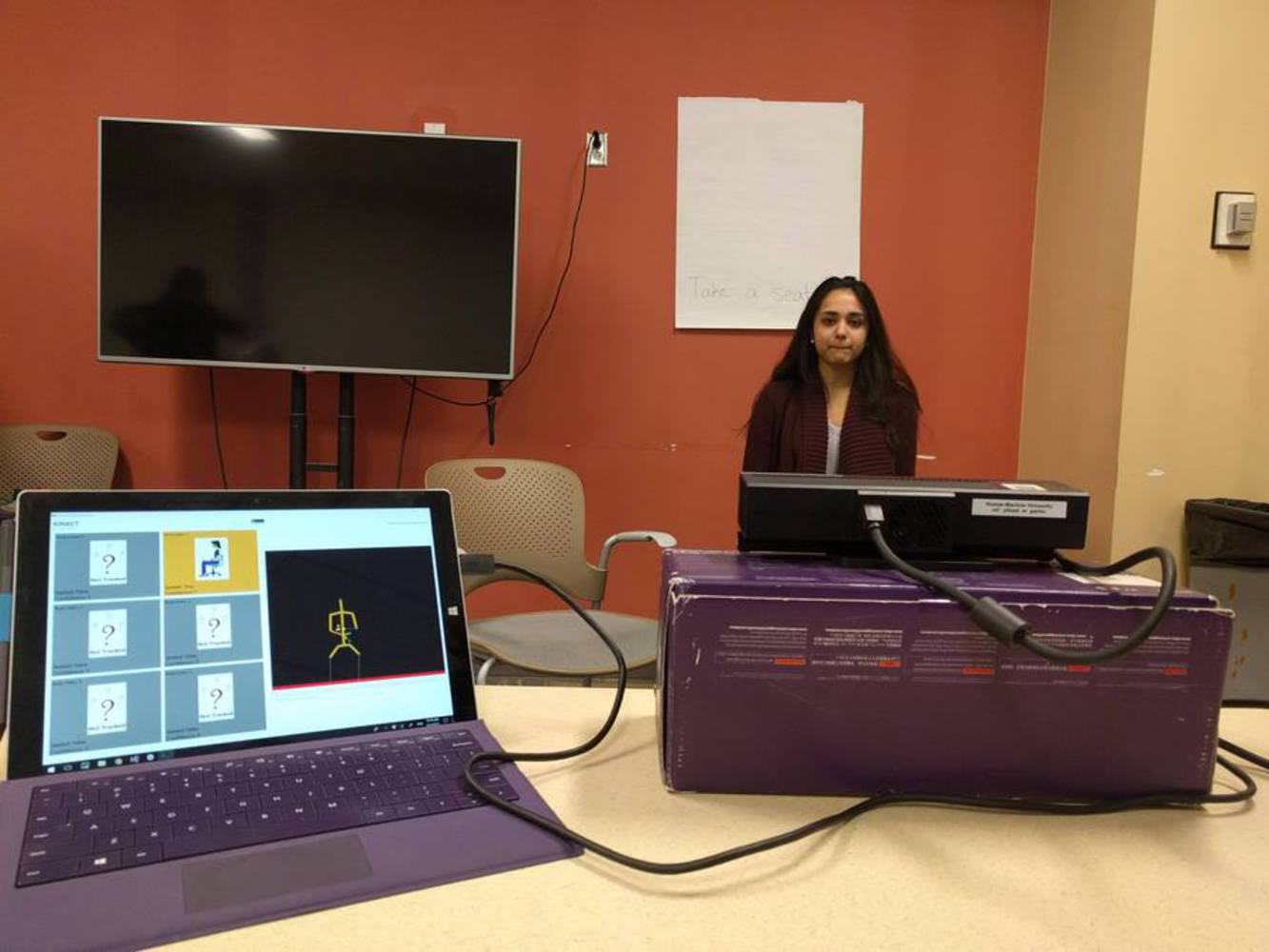Reflecting on the process:
We felt that the project was very successful overall. The majority of our time that we spent on this project went to figuring out how to configure the Kinect so that it would do what we wanted, but after hard work and a lot of Google-ing, we are proud of its consistency and accuracy that it achieves.
We also feel that our concept behind the idea was strong, and after discussing with the special judges on presentation day, got to see the many environments that this same installation could be used. For example, we could see this installation being put in a children's museum, where each person sitting down would instead play a certain sound, but at school, it could help teachers get all students to sit down so that the sound stops playing.
Rose:
Our project emphasized on the environment being empathetic towards the user, and its approach to the audio learning experience is unique and interesting. The special judges really enjoyed being able to figure out what the installation did without us having to explain, and soon realized the almost game-aspect of our installation and all the potential it could have in different spaces.
Bud:
We could have done some more user testing. On the day of the presentation, people would walk to and fro in front of the Kinect, resetting the skeleton reading and throwing our audio off for a few seconds.
Thorn:
The physical space itself could have been made more special--we did have some lights around the chairs we encouraged participants to sit, but our installation was very experience-heavy.

